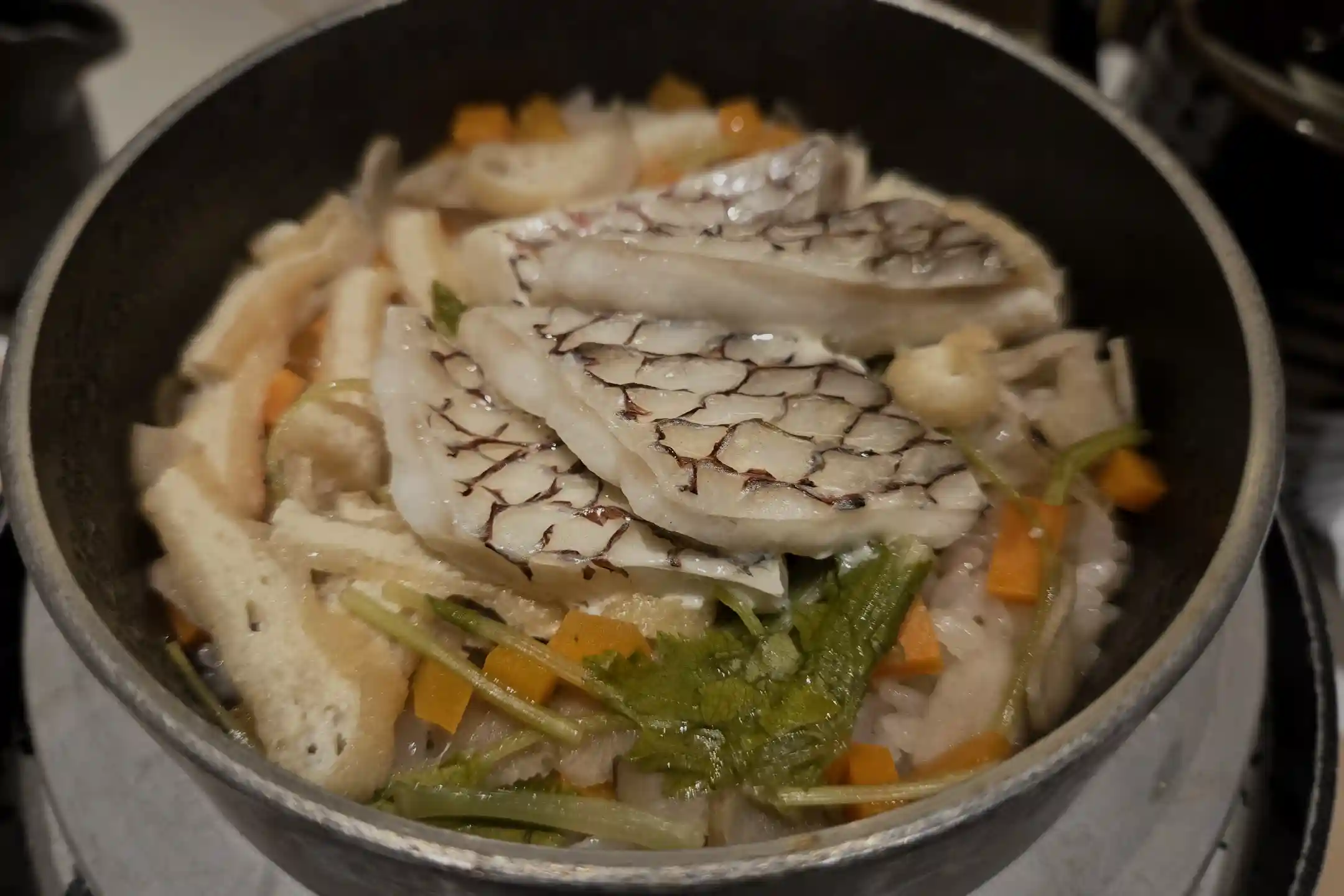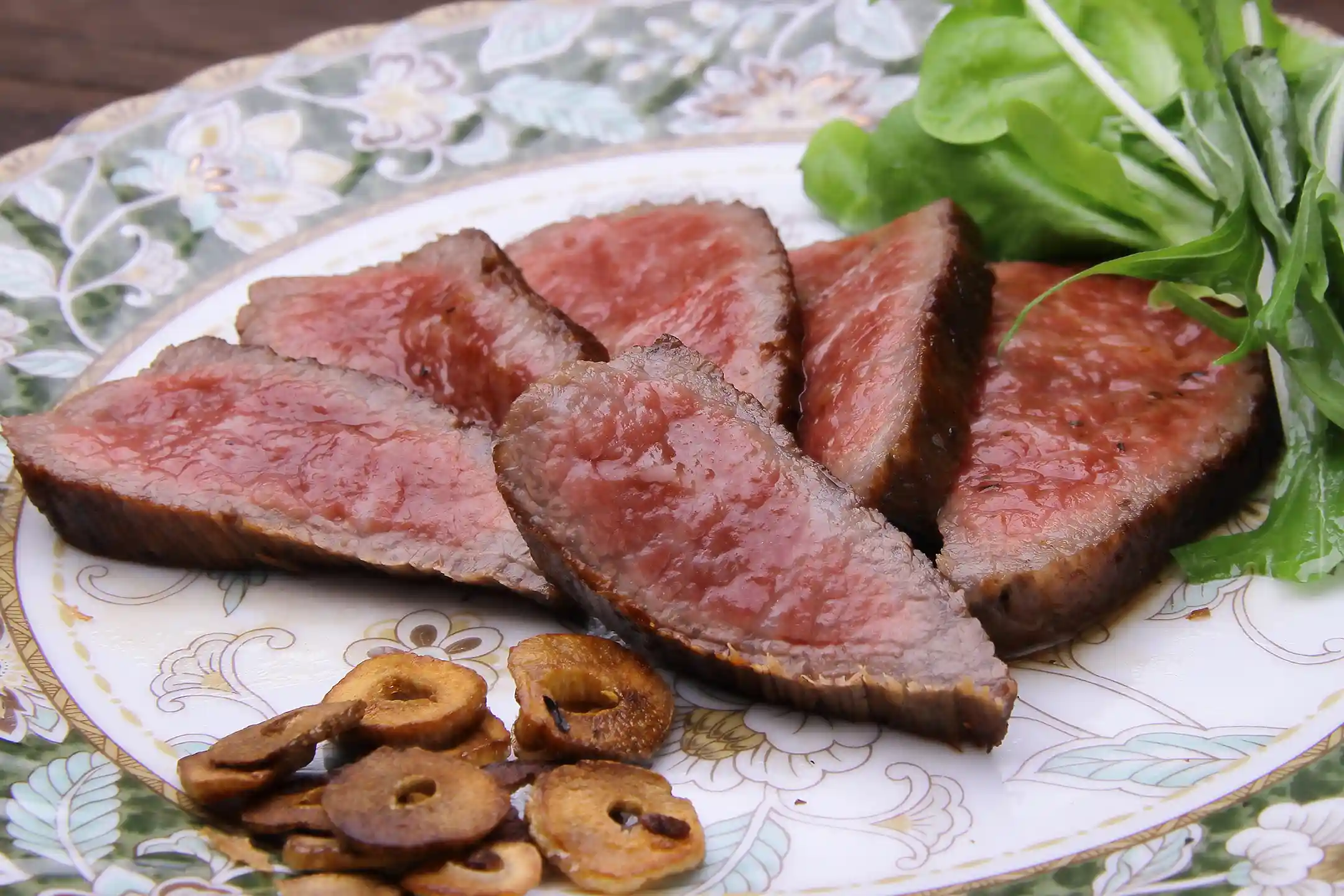Nicknamed the “Nation’s Kitchen,” Osaka has long been a treasure trove of culinary culture, gathering abundant ingredients from all over Japan and developing an incredibly diverse range of flavors. Beyond famous flour-based dishes that exemplify Osaka food, such as okonomiyaki and takoyaki, the city boasts many unique creations—from kushikatsu (deep-fried skewers) to niku-sui (beef broth soup)—that have satisfied the appetites of locals for generations.
In this blog, we will delve into the depth of Osaka food culture, not only by looking at its history, traditions, and regional characteristics but also by exploring the cultural backgrounds that may be of particular interest to those from overseas—elements often left untouched by conventional guidebooks. Furthermore, we’ll shine a spotlight on the city’s incredible diversity, including Michelin-starred restaurants that are garnering global attention, the fusion of overseas influences, and the innovations brought about by sustainability efforts and cutting-edge technologies.
Here, we’ll guide you through the essence of Osaka—known as the “City of Kuidaore” (to ruin oneself by extravagant dining)—from a perspective that is easy for Western audiences to understand, appealing not only to travelers but also to the locals who continue to be charmed by this gastronomic wonderland.
The History and Cultural Background of Osaka Food
The Origin and Background of the “Nation’s Kitchen”
Since the Edo period, Osaka has flourished as a commercial hub that gathered ingredients from across the country, earning it the title “Tenka no Daidokoro” (“the Nation’s Kitchen”). The name carries the connotation of being Japan’s collective “kitchen,” as storehouses in what was then called “Ōsaka” accumulated rice paid as tax and various regional specialties, which were then distributed nationwide by merchants. From Hokkaido in the north to Kyushu in the south, fresh ingredients arrived in Osaka, facilitated by its extensive network of sea and land routes.
This abundance of ingredients gave rise to Osaka’s culinary culture, shaped by the philosophy of mottainai—a principle that values avoiding waste—and by local residents renowned for their refined palates. From a Western point of view, this uniquely Japanese mottainai spirit is not merely about frugality, but reflects a deeper cultural value of living in harmony with nature and treasuring resources.
In recognizing this, one can look beyond an ethnocentric assumption that one’s own standards are the only norm and use Osaka’s example as an opportunity to appreciate other cultures. It is in this environment that Osaka also acquired the nickname “Kuidaore no Machi,” or the city where people “eat until they drop.”
The Fusion of Festivals, Events, and Osaka Food
In Osaka, seasonal festivals and annual events are closely linked to the local food culture. A prime example is the custom of eating ehō-maki (a thick rolled sushi) in one uncut piece on Setsubun (the day before spring begins). This practice is said to have started with Osaka merchants praying for business prosperity and has since spread throughout Japan as a popular event food, illustrating how a regional culture can adapt and gain nationwide acceptance.
For people from different regions or countries, this particular way of eating may seem unusual at first, but understanding the wishes and traditions behind it goes beyond labeling it as a mere curiosity. Adopting a culturally relativistic perspective—asking “why do they do it this way?”—allows for a deeper appreciation of local customs.
During the Tenjin Matsuri in summer and the Tōka Ebisu festival (for business prosperity), stalls selling takoyaki or kushikatsu line the streets, bringing Osaka’s vibrant atmosphere to life. Enjoying takoyaki by the riverside on a festive evening offers a glimpse into the city’s long-cultivated food heritage. For Japanese people, these traditional events represent the special way of celebrating a “hare no hi” (auspicious day), but for overseas visitors, it can be a refreshingly new experience.
At the same time, rather than taking an Orientalist view that overly exoticizes foreign customs, it is important to respectfully engage with the local faith and everyday habits that underpin these festivities.
Representative Local Dishes of Osaka Food

Okonomiyaki — Iconic “Konamon” Culture
Okonomiyaki is a quintessential example of Osaka’s flour-based (“konamon”) cuisine. Made by mixing flour with dashi (Japanese broth), cabbage, egg, and other preferred ingredients and cooking it on a hotplate, okonomiyaki is uniquely rooted in the Osaka food scene. Some trace its origins to the 16th-century tea master Sen no Rikyū, who documented something similar called “funo-yaki,” which evolved over time into a popular dish among the masses. After World War II, a version packed with cabbage gained widespread appeal as an affordable meal.
Compared with Western dishes like pancakes or crepes, Japanese flour-based foods have a distinctive layering of flavors characterized by the delicate dashi, the texture of the ingredients, and the sweet-savory sauce. First-time Western diners are often surprised at how something so “rich” can still possess a subtle yet profound depth of flavor—another demonstration of cultural relativism that reminds us that our own culinary norms are not the only standard.

Takoyaki — The Quintessential Street Food
Tasty and fun, takoyaki are small balls of batter with a crispy exterior and a gooey interior, stuffed with pieces of octopus that burst with umami. Invented in Osaka in the 1930s, they rapidly gained popularity throughout the city after World War II. Compared to Western street foods, takoyaki’s batter and choice of ingredients are quite unique, prompting many first-timers to exclaim in surprise, “I never knew something like this existed!”
From a cultural appropriation standpoint, it’s worth noting that more and more international variations of seafood are being incorporated into takoyaki. The key, however, is to respect its original cultural roots while enjoying new creative twists.

Kushikatsu — Crunchy Comfort Food
Kushikatsu—bite-sized pieces of meat, vegetables, or seafood skewered, coated in batter, and deep-fried—is a representative “commoner’s gourmet” dish in Osaka. It first appeared around 1929 in the Shinsekai area, quickly spreading from the Janjan Yokocho district. The “no double-dipping” rule with the shared sauce is a famous custom that surprises many visitors who might unconsciously reach for a second dunk.
This is more than a quirky local rule; it reflects concerns for hygiene as well as consideration for others when sharing sauce. It’s also an example of the Japanese sense of group awareness and personal space—a concept that can feel novel from a more individualistic Western viewpoint.

Other Lesser-Known Signature Dishes
Niku-sui is a clear broth soup generously filled with beef, born out of a customer’s “udon-less” request at a noodle shop. Hari-hari nabe is a winter hot pot featuring whale meat and mizuna greens, notable for the crunchy texture of the mizuna. Whale meat consumption can be a contentious topic for many in Western countries, but it is also an important subject for understanding cultural backgrounds.
Given that meat consumption was restricted in Japan for centuries, whale served as a precious source of protein for a time. Instead of labeling it as simply “right” or “wrong,” a historically contextualized, postcolonial viewpoint that asks “why did this practice emerge?” can offer greater insight.

Cultural and Artistic Osaka Food Experiences
Osaka is a city where a distinct food culture, a rich history, and art interconnect to offer a multitude of experiences. While actively embracing foreign influences, the region also respects traditional Japanese aesthetics. This approach has fueled the rise of Michelin-starred restaurants and creative collaborations with the arts. Viewing cuisine as “art” goes beyond merely tasting dishes; it involves understanding the history, culture, and values behind them. Below, we introduce various ways to enjoy Osaka’s vibrant food scene, including guided tours led by local experts, hands-on cooking classes, and upscale restaurants.

Guided Tours with Local Experts
Taking a tour with a historian or food guide to visit historical sites like Osaka Castle while learning about the origins of local dishes is a perfect way to immerse yourself in both culture and cuisine simultaneously. Strolling through downtown neighborhoods and shopping arcades reveals the Japanese concept of omotenashi (hospitality) and strong community bonds—offering a glimpse into real Osakan life that goes beyond stereotypes or simplistic “othering.” Western travelers can rest assured that local guides will kindly explain any unfamiliar rules or customs.
Cooking Classes and Workshops
From classic flour-based dishes to authentic kaiseki (multi-course) cuisine, cooking classes in Osaka provide a shortcut to truly understanding the local food culture. Workshops at established restaurants often teach not just how to make dashi or master traditional cooking techniques, but also the relationship between cuisine and seasonal events, going beyond mere recipe learning.
These experiences may also reveal differences in gender roles or family structures that come to light when Western participants encounter Japanese cooking norms—an interesting angle through the lens of feminist theory or intersectionality. For instance, Japan’s longstanding assumption that “meal preparation is a woman’s job” is gradually changing, adding yet another layer to your cultural discovery.
Fine Dining with an Artistic Flair
At restaurants that emphasize artistry, not only are the tableware and plating meticulously designed, but attention is also given to lighting, interior décor, and music to stimulate all five senses. Each dish arrives like a work of art, providing a dining experience that borders on an act of “viewing” or “appreciating,” rather than just eating.
Visitors from overseas often find it fascinating how deeply the concept of seasonality and respect for nature—very characteristic of Japanese culture—are woven into multi-course meals. By embracing cultural relativism and understanding the seasonal festivals and Shinto-inspired reverence for nature that lie behind the cuisine, one can experience a deeper sense of awe and satisfaction.
Refined Spaces and Quality Dining in Osaka
Osaka’s culinary scene is not all about casual dining; it also offers luxurious dining experiences in sophisticated spaces. Restaurants converted from historic buildings, modern establishments in skyscrapers—these are places where architecture and interior design themselves become part of the artistic appeal.
Here, too, it’s crucial not to mystify “Japanese-ness” but to carefully understand the craftsmanship and the thoughtful design behind these spaces, which leads to genuine cross-cultural understanding.
Architectural Highlights and Interior Design
In renovated traditional houses or retro buildings, the warmth of wooden structures and contemporary art coexist in perfect harmony, creating a one-of-a-kind atmosphere. Meanwhile, restaurants located high above the city offer stunning night views paired with stylish interiors, delivering an urban energy that transports diners to a realm of refined luxury.
This blend of tradition and innovation is particularly intriguing from a postcolonial viewpoint, as Osaka continues to exhibit a dynamic interplay between past and present, and between local and international influences.
Where Fashion Meets Food in Osaka
In fashion-forward districts such as Shinsaibashi and Umeda, restaurants and bars with specific dress codes are gaining popularity. This approach of enjoying food as part of a larger aesthetic, including one’s outfit, resonates with the visually oriented dining culture in the West. At the same time, it embodies the Japanese penchant for “dressing up for a special occasion.”
Pop-up events are frequently held, so it’s not uncommon in Osaka to see “food” exist as an extension of one’s personal expression through clothing and accessories.
Sustainability and Innovation in the Osaka Food Scene
In recent years, amid a global surge in environmental awareness, Osaka has been actively working on reducing food waste and promoting local production for local consumption. Building on its history as the “Nation’s Kitchen,” where abundant food resources have always flowed, collaborative efforts among the government, universities, and private enterprises have intensified, seeking to optimize production, distribution, and waste management. These initiatives go beyond mere gourmet trends to address deeper social and environmental issues.
Osaka’s historical role as a hub distributing ingredients throughout the country also offers a global perspective in a postcolonial sense: examining the journey of food can reveal the complex network of exchanges—and sometimes inequalities or conflicts—across regions and countries. Today, Osaka is leveraging its intricate history while combining cutting-edge technology and sustainable values to shape a new era of food culture.
Farm-to-Table and Organic Initiatives
Farm-to-Table restaurants in Osaka directly partner with nearby farms or urban organic growers, offering produce picked that same day. By adhering to organic JAS standards that limit pesticide use, these establishments draw out the natural flavor of the ingredients. Visitors accustomed to Western cuisine often rediscover “the true savor of vegetables” in these delicately prepared dishes.
There is also rising interest in reviving traditional or heirloom vegetables, and more restaurants are creating original recipes that uncover new value in these ingredients. Alongside boosting local economies, such efforts often intersect with gender and diversity considerations. In some cases, female farmers or members of the queer community form their own networks, pioneering new farming methods and business models. From an intersectionality perspective, “food” thus functions as a platform that connects multiple social issues.
Eco-Friendly Transportation and Charging Spots
For those seeking an eco-friendly journey, Osaka’s EV (electric vehicle) charging infrastructure is a significant advantage. Many major hotels and public facilities are equipped with charging stations, reducing CO2 emissions during travel and enhancing overall convenience. Additionally, the city is well-served by subways, JR lines, private railways, and buses, making it easy to get around—especially with a tourist pass that can help you cut costs.
The city’s extensive public transit system and EV initiatives highlight not just the appeal of traditional food culture but also the city’s commitment to responsible consumption in a modern context. Considering not only “what to eat” but also “how to travel and engage with local communities” can make your journey in Osaka all the more meaningful.
Practical Tips for Enjoying the Best Osaka Food

To fully savor Osaka’s gourmet scene, it’s crucial to understand basics like how to make reservations, choose transportation, and follow dress codes. Popular establishments can become booked up quickly on weekends or during peak travel seasons. While some places accept online bookings, long-established restaurants might only take reservations by phone. Moreover, there are numerous seminars and workshops that deepen cultural understanding, perfect for travelers who don’t just want to eat, but also learn about the city’s culinary background.
Transportation and Access
Public transportation in Osaka is extensive, making it easy to move around the city center from Kansai International Airport (KIX) or Itami Airport. English signage is on the rise, and there are plenty of handy route-finding apps, making it relatively straightforward for first-time visitors. By using tourist passes or IC cards, you can take advantage of discount offers.
Taxis are also abundant, and more vehicles now accept cashless payments. EV car rental services are increasingly available, appealing to those who want to reduce their environmental impact while traveling.
How to Reserve Restaurants and Dining Etiquette
Securing a reservation well in advance is essential for Osaka’s popular eateries. Michelin-starred or famous restaurants may fill up weeks ahead. Some places only speak Japanese, so if you’re worried about the language barrier, consider asking your hotel concierge or a travel agency for assistance.
Regarding table manners, you’ll find plenty of unique Japanese customs, from how to hold chopsticks and use the oshibori (moist towel) to not overusing soy sauce. You don’t need to be overly formal, but paying attention to these details can enhance your appreciation of the local food culture. For high-end establishments with a dress code, “smart casual” or above is typically recommended, just as it is in Western fine-dining contexts.
Learning Opportunities: Cultural Seminars and Lectures
At Osaka University, Osaka Metropolitan University, and various culture centers, you’ll find seminars on food culture that are prime opportunities to deepen your cross-cultural understanding. These might include scientific explorations of fermented foods like soy sauce and miso, as well as lectures on unique local cooking methods and social issues, helping participants avoid simplistic othering or stereotypes. Hands-on workshops where you cook and taste the dishes give a tactile understanding of culture that words or theories alone cannot convey.
By tapping into these educational resources, you can experience the historical, social, and environmental dimensions of food culture on a deeper level. For many international visitors, this moment—where food transcends mere deliciousness to become a “key to understanding another culture”—is profoundly transformative.
Conclusion
Building on its history as the “Nation’s Kitchen,” Osaka’s food culture has evolved in tandem with festivals and events, artistic presentation, and sustainability initiatives. From iconic flour-based dishes like okonomiyaki and takoyaki to gourmet courses at upscale restaurants, the city’s culinary diversity reflects its openness to new influences while preserving tradition.
Moreover, as sustainability and social responsibility gain importance—evident in farm-to-table practices, organic produce, and the expansion of EV infrastructure—Osaka continues to innovate as a leader in the culinary world.
For travelers from Europe and North America, it’s fascinating to see how modern establishments offering multilingual support coexist with old-fashioned restaurants that still take only telephone reservations. As discussions of cultural relativism and Orientalism suggest, viewing “Japanese cuisine” merely as an exotic spectacle falls short of capturing its essence. Instead, engaging with the history, social context, and future vision behind the food can unveil the true depth of the Osaka food scene.
We hope you’ll learn, interact, and discover something new along the way—by doing so, you’ll undoubtedly unlock even greater radiance in the “City of Kuidaore.” Enjoy your journey through Osaka’s rich world of food culture, and may your curiosity be the key that opens its many culinary doors.
Author Bio

Natsumi Ikeshita
Experienced in B2B SaaS marketing and “omotenashi,” Natsumi directs media operations with a focus on hospitality and cultural storytelling. Her global experience and marketing skills bring fresh value to Bespoke Discovery’s content.




.webp)
.webp)